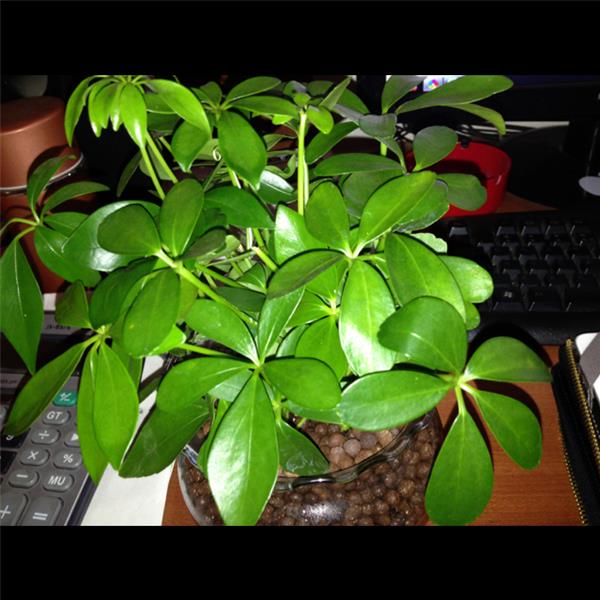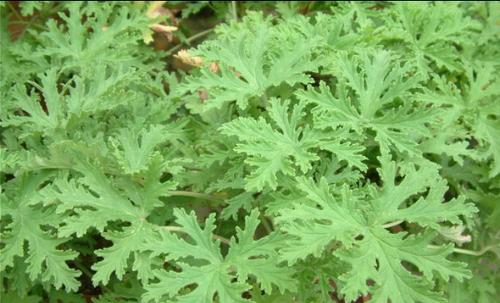What are the herbaceous plants?
Herb is a general term for a class of plants, but it is not a unit in the scientific classification of plants. The concept corresponding to herbaceous plants is woody plants. People usually call herbaceous plants "grass" and woody plants as "trees", but there are occasional exceptions, such as bamboo, which belongs to herbaceous plants, but people often regard them as a kind of tree.

herb
The xylem of the plant is less developed to underdeveloped, and the stem is succulent and soft. According to the length of the life cycle of herbaceous plants, it can be divided into:
1. Annual herbs (annual) can complete their life cycle in a growing season, that is, plants that bloom and die after fruiting, such as rice, soybeans, tomatoes and so on.
two。 Biennial herbs (biennial) only grow vegetative organs in the first growing season (autumn), and blossom in the second growing season (spring), such as winter wheat, sugar beet, broad bean and so on.
3. Perennial herbs (perennial herb) are herbs that can live for more than two years. The underground parts of some plants are perennial, such as persistent roots or rhizomes, bulbs, tubers and other abnormal organs, while the aboveground parts die every year, and new branches grow from the underground parts in the following spring, such as lotus root, onion, taro, sweet potato, dahlia and so on. In addition, the aboveground and underground parts of some plants are perennial, after flowering and fruiting, the aboveground parts still do not die, and can bear fruit many times, such as evergreen, Ophiopogon japonicus and so on.
Among herbs, the habits of annual, biennial and perennial sometimes vary with geographical latitudes and cultivation habits, such as wheat and barley are biennial herbs when sowing in autumn and annual herbs when sowing in spring; for example, cotton and castor are annual herbs in Jiangsu and Zhejiang, while perennial herbs can grow in the south of low latitudes.

Woody plant
Woody plants have flowers, leaves, fruits and branches of various trees and shrubs; herbaceous plants have a large number of flowers and lawn ground cover plants. The ecological benefit of the plant community composed of trees, shrubs and lawns is extremely significant, so the reasonable collocation of trees, shrubs and grasses should be considered in urban garden plant landscaping. Due to the large amount of green trees, trees have the functions of sun and rain, noise reduction and vacuuming, and landscape effect.
Woody plants have flowers, leaves, fruits and branches of various trees and shrubs; herbaceous plants have a large number of flowers and lawn ground cover plants. The ecological benefit of the plant community composed of trees, shrubs and lawns is extremely significant, so the reasonable collocation of trees, shrubs and grasses should be considered in urban garden plant landscaping.
Because of the large amount of green trees, trees have the functions and landscape effects of shading from the sun and rain, reducing noise and vacuuming, so in urban greening, they are often used as street trees, solitary trees or planted in patches, and the ecological benefits of trees are the most obvious. it is an indispensable garden plant in urban greening. With the development of social economy and the continuous improvement of the level of urban construction, the planting of trees has developed from 2-3-year-old saplings to 4-5-year-old trees with 8 cm~10 cm DBH or more than 10-year-old trees with DBH of about 20cm. However, special attention should be paid to the selection of different transplanting methods according to different seedling characteristics to improve the survival rate of seedling planting.

Shrubs and shrubs can be mixed with trees and can be planted naturally or densely planted. At present, the most popular is dense planting of small shrubs for landscaping, and the common applications can be summarized as follows:
Instead of the lawn, ① becomes the ground cover plant, pruning the densely planted shrubs to make them flat and uniform, and can also rise and fall with the terrain.
Instead of grass flowers, ② is combined into color blocks and various patterns, using the different colors of leaves, flowers, branches and fruits of various shrubs to plant them into curves, color blocks, flower shapes and other patterns with different meanings.
③ flower beds are fully planted and densely planted with small shrubs in flower beds of different shapes to form flower borders and flower beds.
Grass flower landscape is the use of herbaceous flowers to create a landscape for people to appreciate, according to the use of the form can be divided into lawn mosaic, three-dimensional beautification, flower bed flowers. Lawn mosaic is to embellish or create flower borders in the suitable position of the lawn to make the lawn more colorful; the main forms of three-dimensional beautification are vertical greening decoration, style, flower ball, hanging bag, etc.; flower beds are decorated with flowers planted out of pots to ensure flowers throughout the year. Grass flowers have the characteristics of rapid landscaping and outstanding effect, especially perennial flowers, which have the value of once planting and ornamental for many years. Grass flower landscaping has the characteristics of high ornamental value, strong adaptability, simple management and less investment, so it is widely used in special gardens and in combination with buildings, roads, water bodies and so on.

Lawn mainly refers to the lawn planted and managed artificially, which has the ecological benefits of improving the environment, purifying the air, absorbing dust, sterilizing and preventing diseases, and conserving soil and water. planting lawns in the city's street squares, rest parks, both sides of highways and memorable sites can not only provide people with a place for public activities and rest, but also broaden their horizons. Ease the tension and crowding brought to people with the development of the city. Choosing the fine lawn as the main scene, building flower beds, decorating isolated or clump tree species, and planting ornamental ribbons on the edge of the lawn can strengthen the landscape atmosphere of the lawn.

The most striking difference between herbs and woody plants:
It lies in the structure of their stems. the stems of herbaceous plants are "herbaceous stems", with many relatively small, basic tissue vascular bundles, a large number of parenchyma cells between the vascular bundles, and tough mechanical tissue in the outermost layer of the stem. The vascular bundles of herbaceous plants are also different from woody plants, in which the woody part of the vascular bundles is distributed on the outside while the phloem is distributed on the inside, which is completely opposite to that of woody plants. In addition, the vascular bundles of herbaceous plants do not have cambium and cannot grow continuously, so trees become thicker year by year, while grass and bamboo do not have this ability. Herbaceous stems are a more evolutionary feature than woody stems.
Lawn mainly refers to the lawn planted and managed artificially, which has the ecological benefits of improving the environment, purifying the air, absorbing dust, sterilizing and preventing diseases, and conserving soil and water. planting lawns in the city's street squares, rest parks, both sides of highways and memorable sites can not only provide people with a place for public activities and rest, but also broaden their horizons. Ease the tension and crowding brought to people with the development of the city. Choosing the fine lawn as the main scene, building flower beds, decorating isolated or clump tree species, and planting ornamental ribbons on the edge of the lawn can strengthen the landscape atmosphere of the lawn.

The most striking difference between herbs and woody plants:
It lies in the structure of their stems. the stems of herbaceous plants are "herbaceous stems", with many relatively small, basic tissue vascular bundles, a large number of parenchyma cells between the vascular bundles, and tough mechanical tissue in the outermost layer of the stem. The vascular bundles of herbaceous plants are also different from woody plants, in which the woody part of the vascular bundles is distributed on the outside while the phloem is distributed on the inside, which is completely opposite to that of woody plants. In addition, the vascular bundles of herbaceous plants do not have cambium and cannot grow continuously, so trees become thicker year by year, while grass and bamboo do not have this ability. Herbaceous stems are a more evolutionary feature than woody stems.
Related
- Wuhan Hospital Iron Tree Blooming Result Was Instantly Frightened by the Gardener Master
- Which variety of camellia is the most fragrant and best? Which one do you like best?
- What is the small blue coat, the breeding methods and matters needing attention of the succulent plant
- Dormancy time and maintenance management of succulent plants during dormancy
- Minas succulent how to raise, Minas succulent plant pictures
- What are the varieties of winter succulent plants
- How to raise succulent plants in twelve rolls? let's take a look at some experience of breeding twelve rolls.
- Attention should be paid to water control for succulent plants during dormant period (winter and summer)
- Watering experience of twelve rolls of succulent plants
- Techniques for fertilizing succulent plants. An article will let you know how to fertilize succulent plants.



